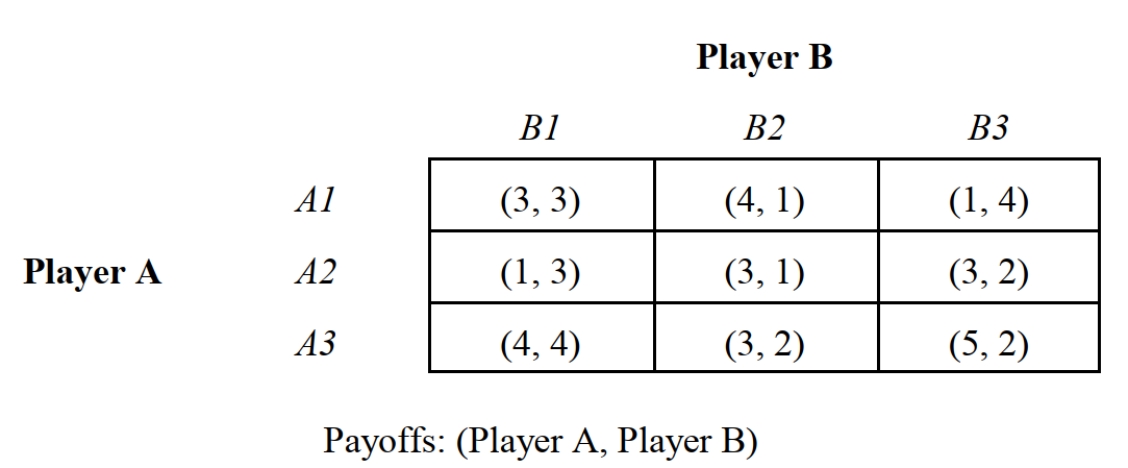Multiple Choice

-Suppose that the game depicted in Figure 11.7 is modeled as a sequential move game with Player A moving first and the payoffs are (Player A, Player B) . The payoffs for this game are:
A) (5, 2) .
B) (2, 3) .
C) (2, 4) .
D) (3, 2) .
E) None of the above are correct.
Correct Answer:

Verified
Correct Answer:
Verified
Q21: A decision node:<br>A) May be the root
Q22: <img src="https://d2lvgg3v3hfg70.cloudfront.net/TBR1330/.jpg" alt=" -Consider game depicted
Q23: <img src="https://d2lvgg3v3hfg70.cloudfront.net/TBR1330/.jpg" alt=" -Suppose that the
Q24: <img src="https://d2lvgg3v3hfg70.cloudfront.net/TBR1330/.jpg" alt=" -Consider the one-time,
Q25: A subgame-perfect equilibrium:<br>A) Is the solution to
Q27: <img src="https://d2lvgg3v3hfg70.cloudfront.net/TBR1330/.jpg" alt=" -Consider game depicted
Q28: <img src="https://d2lvgg3v3hfg70.cloudfront.net/TBR1330/.jpg" alt=" -Suppose that the
Q29: <img src="https://d2lvgg3v3hfg70.cloudfront.net/TBR1330/.jpg" alt=" -Consider the game
Q30: A solution to a multistage game may
Q31: In the case study "Sun Country versus